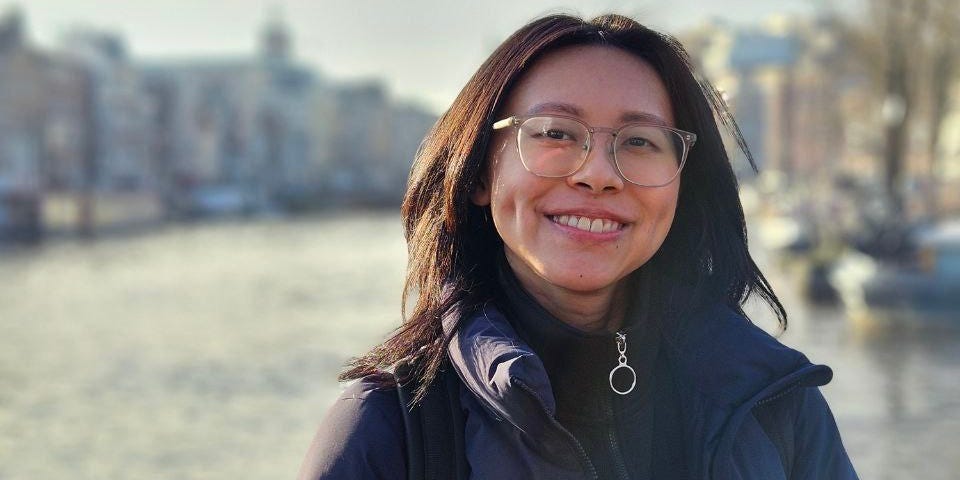When Royanne Ng got into Columbia University last year, she should have been elated. Instead, the nearly $80,000 first-year tuition and fees — not including housing — made her stomach turn.
The Singaporean student turned the Ivy League program down and chose one across the Atlantic instead for a fraction of the cost.
At Columbia, she was offered a spot in the Film and Media Studies MA with a concentration in emergent media — a track that explores formats like virtual and augmented reality. The 28-year-old is now pursuing a one-year master’s in cultural data and AI at the University of Amsterdam, a program that blends machine learning with theory and tech policy.
Ng also applied to NYU but wasn’t accepted, and she ultimately dropped her application to the University of Edinburgh in the UK.
Her postgrad degree had to be “very strategic,” she told Business Insider — a move to boost her job prospects and reposition her career in Singapore.
“If I’m going to spend this much of my financial savings on a degree, it has to be really, really worth it,” she said.
The US once had a near-monopoly on elite higher education. But as tuition rises, safety concerns grow, and political rhetoric turns hostile toward international students, the calculation is shifting.
Here’s how Ng made her choice.
Prestige vs practicality
Columbia’s program offered big advantages: name recognition, accomplished alumni, and the implicit promise of career opportunities, Ng said.
The brand name, she added, carried the common assumption that it gives students “a head start when it comes to job opportunities.”
But the costs were impossible to ignore. Columbia’s program ran for two years and charged nearly $80,000 in tuition and fees just for its first-year students. In contrast, the University of Amsterdam’s fees were about €17,000 for a one-year program.
“The difference is just so stark,” she said, especially when Columbia required a hefty deposit that felt like too much commitment.
It wasn’t just about money. She said many US courses were “more traditional” — rooted in legacy disciplines and slower to adapt. Europe had programs that were a lot more novel and flexible, often designed with interdisciplinary or future-facing themes, she added.
Amsterdam’s curriculum hit the mark. Ng said it aligned with her goal of transitioning from tech communications and a humanities background into a career that connects AI and policy — one she hopes to pursue in Singapore.
Safety and geopolitical concerns
Ng’s family was also worried about her safety if she chose to study in New York — and so was she.
For someone who had lived in Singapore her whole life — a country known for its low crime rates and political calm — she was concerned about gun violence, racial politics, and geopolitical uncertainty in the US.
Still, she said the right school depends on the student’s goals after graduation. Students hoping to stay and work in the US might prioritize a school’s brand, alumni network, and credentials.
But Ng plans to return to Singapore, so standing out in the local job market mattered more.
Ng is set to finish her program in August.
Here’s her pros-and-cons list of US graduate schools:
Ng had created a rough version at the end of 2023 while debating whether to choose the US for graduate school.
When BI reached out to her in June, she pulled it together into a neat table:
Read the full article here
















